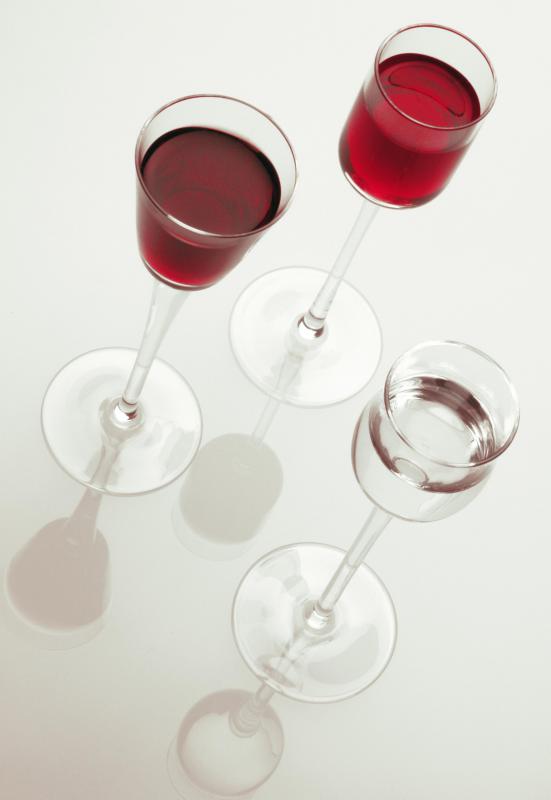At DelightedCooking, we're committed to delivering accurate, trustworthy information. Our expert-authored content is rigorously fact-checked and sourced from credible authorities. Discover how we uphold the highest standards in providing you with reliable knowledge.
What is Grappa?
Grappa is an Italian alcohol which is made by distilling pomace, the leftovers of winemaking. The name is in fact a reference to this, as it means “grape stems” in an Italian dialect. Many winemaking nations have their own versions of this drink, and they tend to be very strong, fiery, and incredibly diverse. Grappa is probably most similar to brandy. Many Italian importers carry an array of grappa, and it can also be found stocked at some large markets.
This alcohol is classified as a pomace wine, referencing the fact that it is extracted from the organic material left over after grapes are pressed into juice for fermentation. A typical batch of pomace includes grape skins, seeds, stems, and sometimes a few leaves as well. Grappa is made by heating the pomace, causing it to produce steam, and then forcing the steam through a distillation column.

Freshly distilled grappa is colorless, with a strong odor of alcohol, and the alcohol content can vary from around 40 to 80% alcohol by volume. While it can be drunk fresh, most people like to age it, and the finest Italian grappas are aged in wood, sometimes for extended periods of time. As the wine is aged in wood, it will acquire a warm honey color and a complex flavor. Just like other wines, grappas taste very different, depending on where they come from, the grapes used, and the skill of the distiller.

Grappa is traditionally served at a cool temperature, with many people erring on the side of serving it too cold, because it can always be warmed with the hands until it releases its rich aroma. Typically, it is offered in a tulip shaped glass, and it may be drunk alone, or consumed with fruits, cheeses, and desserts. This beverage is typically served after a meal as a digestivo, in Italian parlance.
One famous usage of grappa is in the Italian cafe coretto, “corrected coffee,” an espresso served with the wine, either on the side or blended into the coffee. When the two are served separately, the custom is to finish the coffee and follow with the grappa, and some people like to pour a few drops into the empty espresso cup, swirl them around, and then drink from the cup.
AS FEATURED ON:
AS FEATURED ON:












Discuss this Article
Post your comments